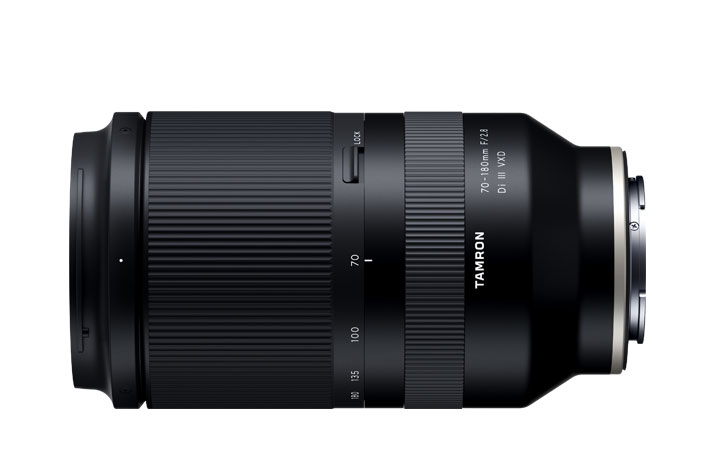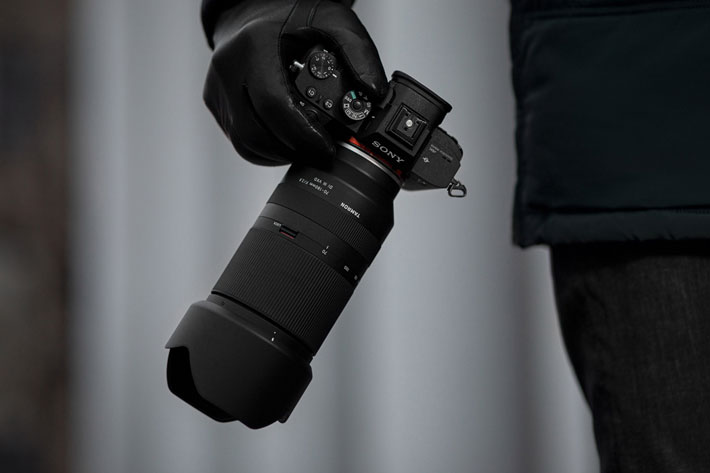
Announced as the the lightest and most compact in its class, the new Tamron 70-180mm F/2.8 Di III VXD has some interesting features in a package made for travelers. The new lens will be available in May.
The new offer from Tamron is the center for many discussions online. Trying to compare it to Sony’s FE 70-200 mm F2.8 GM OSS does not make much sense, though. Sony’s zoom costs $2599.99, has a weight of 52.21 oz (without tripod mount) and dimensions of 88.0 x 200 mm. The Tamron, on the other hand, costs $1199, has a weight of 28.6 oz (or 810g) and maximum diameter of 81mm, with 149mm length (at the 70mm setting).
If you don’t want to spend a whole lot of money, want to travel light and have a compact fast lens in your photo bag, then the Tamron 70-180mm F/2.8 Di III VXD makes sense. It’s a good lens to bring distant subjects closer but also to photograph details, as the lens has a close focus distance of 0.85m throughout the entire zoom range against 0.96m on the Sony. At the 180mm telephoto end it achieves a maximum magnification ratio of 1:4.6. If you don’t mind focusing manually, the close-up range can go down to 0.27m at the 70mm wide-angle end in manual focus (MF).

A zoom for stills and video
The third model in Tamron’s series of fast F/2.8 zoom lenses for both E-Mount and FE-Mount Sony mirrorless cameras, this lens joins the 17-28mm F/2.8 and the 28-75mm F/2.8 lenses, forming a trio of lenses that covers almost everything most photographers – and videographers – may need. This Dream Team of large aperture zooms for full-size mirrorless cameras shares a similar filter diameter of 67mm for system convenience, reducing cost and trouble when working with PL, ND and other filters. A key advantage of this series is their portability, as the three models altogether weigh just 1,780g or 62.8 oz.
Developed under the concept of “making large aperture zoom lenses user-friendly,” the lens utilizes Tamron’s newly developed VXD (Voice-coil eXtreme-torque Drive) linear motor focus mechanism. Additionally, a floating system is used to achieve excellent optical performance at all shooting distances. By simultaneously operating two VXD units via electronic control, the system produces clear and sharp images of all objects near and far, while enabling low noise shooting in silent settings. The enhanced, highly responsive focus features of the 70-180mm F/2.8 enable following a subject’s movements to provide users with a whisper-quiet, high-precision shooting experience, not just for still images but also video.
No image stabilization included
The 70-180mm F/2.8 has an optical construction of 19 elements in 14 groups. It includes a total of six XLD (eXtra Low Dispersion) and LD (Low Dispersion) lens elements combined, and three GM (Glass Molded Aspherical) and hybrid aspherical lens elements combined. Special lens elements, says Tamron, are generously and optimally arranged to correct chromatic aberration and maintain very high-resolution performance from edge-to-edge.
This model also features BBAR-G2 (Broad-Band Anti-Reflection Generation 2) Coating, which minimizes ghosting and flare and produces stunning, clear images with brilliant, sharp subject detail. Furthermore, excellent high image quality across the entire zoom range is enhanced by camera-based distortion and shading correction. Additionally, the bokeh effect obtained using the fast F/2.8 aperture delivers beautifully smooth and soft transition from the subject to the background. The images created with this lens are emblematic of Tamron’s pursuit to combine supreme compactness with superb image quality.
There is a key difference between the Tamron and Sony lenses that explains why this lens is both lighter and cheaper: while the to Sony’s FE 70-200 mm F2.8 GM OSS has high-performance image stabilization built right into the lens for sharp, blur-free images with a wide range of subjects, the Tamron 70-180mm F/2.8 Di III VXD has no image stabilization whatsoever, relying on the IBIS sysem from Sony mirrorless models to keep the image sharp. This may not be a problem for many, but it is important to mention it, because it explains why this is the lightest and most compact in its class.
If the Tamron 70-180mm F/2.8 Di III VXD works as the company suggests, Sony users will be given a new option in terms of fast lenses, something that will, probably, make those choosing the Canon EOS R or the Nikon Z unhappy, as there is no information that this lens will be made for those mounts. At least not yet…


